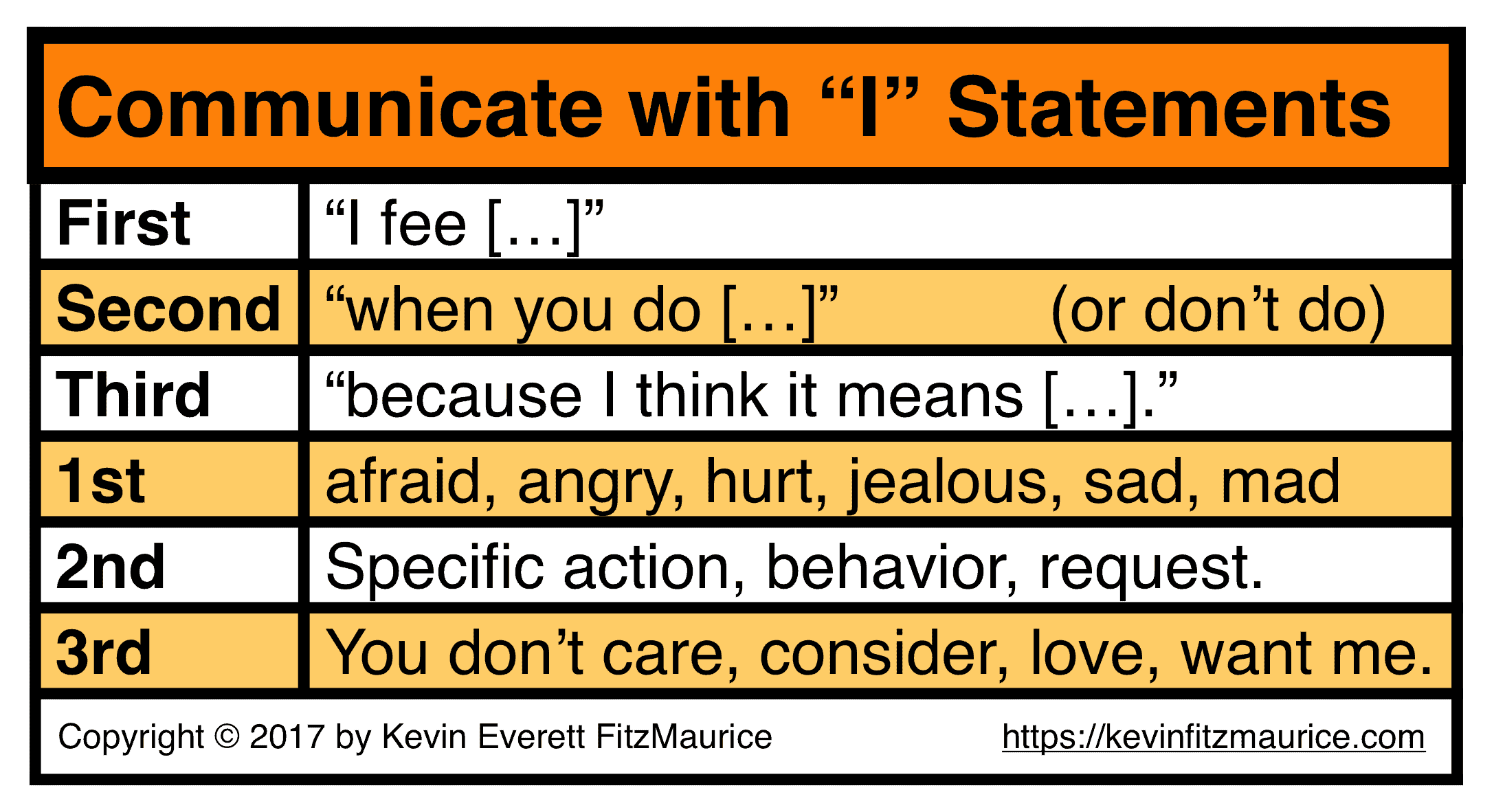Communication In and Out: Both Paths
- Attitude Is All You Need! Second Edition will help you to improve your attitude, which improves everything else.
Communication In and Out: It is best to divide communication into two sides and to stay on one side at a time. Both paths are important.
Communication In and Out: You Can Do Better
- Learn to Send
- Learn to Recieve
- Read and discover the best diagrams and maps of how people control and manipulate you.
Communication In and Out: INTRODUCTION
- Let’s make communication as simple and as clear as we can.
- To do this, we will describe two basic ways to communicate and then relate several ways ‘how to’ and ‘how not to’ use them.
- Communication is not a one-way street.
- And while it is best for us to divide the street into two sides—it is just as important that we stay on only one side at a time.
COMMUNICATE IN: THE RIGHT SIDE—RECEIVING
-
MAIN RULE
-
Don’t interpret or add to what they said—just hear it and share it back.
Communication In and Out: Introduction
- First, let’s talk about how we receive communication.
- How do we let communication come into ourselves, and how can we best do that?
Communication In and Out: Right Side of the Street
- We have chosen to emphasize this side of the street by calling it the right side and by putting it first because it is the most often neglected of the two.
- On this side of the street, when we are proceeding in this direction, we want to receive.
- We want to take in sensations, thoughts, and feelings from others and to let them know what we received.
- We want to concentrate on what is outside of us and how we are receiving that.
- We leave out our interpretations and reactions to it for when we are on the other side of the street going in the opposite direction.
Communication In and Out: Rogerian Therapy
- The best model for how to drive on the right side of the street comes from Rogerian Therapy. And it was presented most clearly as a means of interpersonal communication by Thomas Gordon in the now-classic P.E.T.: Parent Effectiveness Training. The basic principle is active listening. On the right side, we concentrate on understanding what the other person is saying and on communicating to them that we got and accepted their message. Acceptance is not to be confused with agreement.
Take In
- So we take in what others are telling us they think and feel, and then we tell them what we have heard them say. If they agree that we have heard them correctly, then they continue, or it is time to switch sides of the street. If they do not agree that we have heard them correctly, then we ask them to elaborate on or to repeat the message. Before we go on to any new messages, we make sure that the other person agrees that we have received what they wanted to send to us. This verifying process is the standard operating procedure in computer telecommunications.
Communication In and Out: Feedback
- You can give feedback as to what you got using sentence starters such as:
- “So what you are saying is . . . .”
- “So what I’m hearing you say is . . . .”
- “You feel . . . when . . . because . . . ?”
- You can also choose to repeat all or part of what they said.
- Or you can just paraphrase what they said: put it in your own words, including their most significant words.
Communication In and Out: Attend
- Your purpose is to attend to what the other person is thinking and feeling on this side of the street.
- While you do not stuff or deny what you are thinking and feeling just because you are on the right side of the street, you do hold or contain it for its right time and place, which is when you are on the other side of the street.
- Remember, you can switch sides of the street rapidly once you learn to hear the other person out.
Communication In and Out: Encourage
- You can encourage the other person to talk by asking what are called open-ended questions.
- These are questions that do not require a simple ‘yes,’ ‘no,’ or statement of fact for an answer.
- Try starting your questions with words such as; what, how, could, and why.
- You can also encourage the person to keep talking by letting them know that you are listening.
- One way to do this is with body language.
- You can appear attentive by leaning forward, sitting upright but relaxed, maintaining an open body posture, and by giving eye contact.
- You can also nod your head in agreement or make guttural sounds of comprehension or agreement, such as “uh-huh” or “umm-hmmm,” to show your involvement with what they are saying.
Communication In and Out: Right Side
- So on the right side, we listen and show that we are listening by attending, reflecting, encouraging their continuing, paraphrasing what they thought and felt, and asking open-ended questions.
- In the case of listening or understanding—’tis better to receive what was meant than to give advice.
Communication In and Out: Problems
- Communication problems occur when both are sending on the same side of the street, either in the same or different directions.
- When both are sending in the same direction, there is no sharing—but there is also no conflict.
- An example of this is when two people are talking at once, and each is listening primarily to themselves.
- When both are sending in opposite directions, there is conflict.
- This conflict is expressed by one or both demanding that the other change their communication style.
- The purpose of this is to get the other out of the way. You can only control how you communicate.
- You can best encourage good communication by practicing it by being a role model for it. Listen when listening.
- Talk when talking.
- Do both single-mindedly.
Communication In and Out: Two Main Blocks to Communication
- Denial of the other person’s reality.
- Blaming them for your reality.
- Read and discover the best diagrams and maps of how people control and manipulate you.
COMMUNICATE OUT: THE LEFT SIDE—GIVING
-
MAIN RULE
-
Give what you think and feel without blaming the other person for it.
Communication In and Out: Introduction
- Now, let’s talk about the other way, the other side of the street, the opposite direction.
- How do we let communication go out of ourselves, and how can we best do that?
Communication In and Out: Respond
- First, let’s talk about how we can effectively respond to what we received.
- We just learned that on the right side of the street, above all else, we do not add to what the other person has said.
- But now we are on the left side, and the rules have changed.
- Now we can respond to what they have said with both interpretation and reaction.
- It is when you expand your reception of their phenomenological world, of their private experiences to include your views, that most trouble begins.
- So let us learn a few techniques or skills to improve the chances of our being heard in turn.
Agreement
- One skill that invariably proves of value is to find some agreement with what they are saying and your reality and then to express that agreement before expressing your ideas.
- Even if the agreement is minor or small, it will still be appreciated.
- A variation is to say something positive about them before you say something negative.
- Also, you can add your insights by summarizing what they said within the frame, the outline, the model of what you have analyzed, of what you think it all means.
- You can also increase their acceptance of you by expressing empathy with what they are feeling or thinking.
- And finally, perhaps the best method of adding is to stroke or compliment the other person for what they thought, felt, or did.
- So to add to what they have said, you can: first find and express some agreement, summarize using your paradigm, express empathy, and stroke their behavior.
“I” Messages
- Now, what is the most effective way for you to express what you think, feel, and want?
- Again drawing upon Gordon’s work, we would have to agree that “I” messages are the surest way to avoid conflict and to get past peoples’ defensive reactions.
- Please ask for the handout on using “I” messages at this point.
Blame Game
- Additionally, let us point out the surest way not to be heard: blame.
- Blaming the other person for what you think, feel, or do is guaranteed to make them stop listening to you and start listening to their thoughts on how to defend themselves against you and attack you.
- This is because blaming is like trying to drive down the middle of a two-way street without hitting anyone.
- You wind up hitting everyone. Blaming is not receiving what the other person thinks or feels—it is telling them.
- Blaming is not giving what you think and feel—it is giving what they should think and feel.
- Blaming is the surest way to destroy interpersonal communication.
Check Reception
- The final technique is to check to see if your message was received.
- Even computers find it necessary for accurate communication to check to see if what was sent was received correctly.
- In the case of sharing what you think and feel—’tis better to take responsibility than to give blame.
WARNING
- If you don’t pay close attention to which side of the street you are on—you may have a head-on collision with someone you love.
- Remember, you can change sides at will, and it is best to do so in order to avoid collisions.
- Another good analogy is computer input and output. If they get mixed, only garbage results!
- Read and discover the best diagrams and maps of how people control and manipulate you.
LISTENING TO SELF OR OTHER
- So far, we have discussed when to receive communication from others and when to give communication to others.
- There is another issue that is more vital.
- This concerns when to pay attention to what is happening inside of you, and when to pay attention to what is happening outside of you.
Listen to Self or Other
- This, too, is a simple duality, a simple choice between two ways of doing.
- The question basically is, “When do I listen to what I am thinking or feeling inside, and when do I listen to what they are saying?”
- If you try to do both—you will succeed at neither.
- However, it is possible to switch between the two so rapidly that you can appear even to yourself to be listening to both at once.
- How can you decide if it is time to pay attention to what others are saying to you or if it is time to pay attention to what you are saying to yourself?
Drink from Your Own Well
- While it may sound complicated and fraught with perils, the answer is surprisingly simple.
- Choose to first pay attention to what you are saying inside, and when that is done, you will be able to pay attention to what is being said outside of you.
- But if you try to do both at once, you will do neither. If you try to force yourself to do one or the other—you will do neither.
- You need to drink from your own well.
- You need to listen to your evaluations first. You need to go to the source within you—you cannot go to the source within the other person.
Feel Your Feelings
- Do not try to think the thoughts or feel the feelings that other people say you should or that they want you to. Instead, think the thoughts that you have and feel the feelings that you have.
- Once that is done, you may then find yourself thinking similar thoughts to theirs or feeling similar feelings to theirs.
- But first, you need to be yourself.
Self First
- First, you need to be aware of and express what you think and feel.
- At the very least, you need to express this internally to yourself.
- Without internal self-expression, there can be no real self.
- Without a real self, there can be no communion with another.
- If you are not true to what you think and feel, you will never be true to what someone else thinks and feels.
- Always make the first contact with yourself!
- Read for maps and diagrams of how people use and abuse you.
Communicate with “I” Statements for Better Results
- Click to understand “I” statements.
- Read and discover the best diagrams and maps of how people control and manipulate you.
Quotations Various Sources
Listed Alphabetically
“A wise man thinks all that he says. A fool says all that he thinks.” —Church bulletin board
“Among my most prized possessions are words that I have never spoken.” —Orson Card
“Be who you are and say what you feel, because those who mind don’t matter and those who matter don’t mind.” —Dr. Seuss
“Blessed is the man who, having nothing to say, abstains from giving us worthy evidence of the fact.” —George Eliot
“But as he which hath called you is holy, so be ye holy in all manner of conversation;” —I Peter 1:15
“Don’t speak unless you can improve on the silence.” —Spanish proverb
“Draw me not away with the wicked, and with the workers of iniquity, which speak peace to their neighbours, but mischief is in their hearts.” —Psalms 28:3
“Education is the ability to listen to almost anything without losing your temper or your self-confidence.” —Robert Frost
“Foolishness always results when the tongue outraces the brain.” —Unknown
“If you cannot say what you have to say in twenty minutes, you should go away and write a book about it.” —Lord Brabazon
“It is better to keep one’s mouth shut and be thought a fool than to open it and resolve all doubt.” —Abraham Lincoln
“Most conversations are simply monologues delivered in the presence of a witness.” —Margaret Millar
“Of all the things you wear, your expression is the most important.” —Janet Lane
“Pleasant words are as an honeycomb, sweet to the soul, and health to the bones.” —Proverbs 16:24
“Silence is one of the hardest arguments to refute.” —Josh Billings
“Some man holdeth his tongue, because he hath not to answer: and some keepeth silence, knowing his time.” —Ecclesiasticus 20:6
“The first duty of love is to listen.” —Paul Tillich, 1886-1965
“The most precious things in speech are pauses.” —Ralph Richardson
“There are very few people who don’t become more interesting when they stop talking.” —Mary Lowry
“Treat a man as he is, and he will remain as he is. Treat a man as he could be, and he will become what he should be.” —Ralph Waldo Emerson
“Two monologues do not make a dialogue.” —Jeff Daly
- Read and discover how CBT, REBT, & Stoicism evolved into one system: STPHFR.
- Read and discover the best diagrams and maps of how people control and manipulate you.
6 Groups of Topics Menu
- 1. Pages by Topic
- 2. Fast-Facts by Topic
- 3. Quotations by Topic
- 4. Poems by Topic
- 5. Scripture by Topic
- 6. Websites by Topic
- Read and discover how CBT, REBT, & Stoicism evolved into one system: STPHFR.
- Read and discover the world’s best breathing exercise for centering and peace of mind.
- Read and discover the best diagrams and maps of how people control and manipulate you.
10 Skills & Topics Menu
- 1. Coping Skills & Topics
- 2. Problem-Solving Skills & Topics
- 3. Communication Skills & Topics
- 4. Recovery Skills & Topics
- 5. Anger Skills & Topics
- 6. Blame Skills & Topics
- 7. Thinking Skills & Topics
- 8. Responsibility Skills & Topics
- 9. Counseling Skills & Topics
- 10. Praying Skills & Topics
- Read and discover how CBT, REBT, & Stoicism evolved into one system: STPHFR.
- Read and discover the world’s best breathing exercise for centering and peace of mind.
- Read and discover the best diagrams and maps of how people control and manipulate you.





